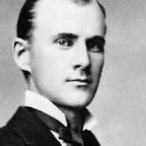First roll-out for new four-car BTSC trains at Turkish plant
-
Recently Browsing 0 members
- No registered users viewing this page.
Announcements
-
Topics
-
-
Popular Contributors
-
-
Latest posts...
-
1
THAILAND LIVE Thailand Live Sunday 17 August 2025
Multiple Injured in Pattaya Motorcycle Collision Pictures courtesy of TMN. Five people were injured in a multi-bike collision on the railway line road at Soi Noen Plub Wan, Nong Prue Subdistrict on the morning of 16 August. Full story:https://aseannow.com/topic/1369949-multiple-injured-in-pattaya-motorcycle-collision/ -
200
‘Putin clearly won’: Pundits say meeting was ‘bad for Americans’
No energy Trump lol. Comical that this is how some people still make assessments when the internet exists and shows otherwise. Trump has the only card, US-Russian relations, and you should hope it works. Otherwise Ukraine will become a rump state with no access to the Black Sea and the EU is likely to pay a terrible price trying to intervene. -
36
THAILAND LIVE Thailand Live Saturday 16 August 2025
to continue: Thailand Live Sunday 17 August 2025 https://aseannow.com/topic/1369970-thailand-live-sunday-17-august-2025/ -
1
THAILAND LIVE Thailand Live Sunday 17 August 2025
Thailand Shuts 1,000 Cannabis Shops in Sweeping Crackdown File photo for reference only. AP Photo/Sakchai Lalit The authorities have ramped up efforts to control cannabis misuse by closing over 1,000 shops and seizing nearly a tonne of cannabis flowers in a sweeping nationwide operation. Full story: https://aseannow.com/topic/1369932-thailand-shuts-1000-cannabis-shops-in-sweeping-crackdown/ -
200
‘Putin clearly won’: Pundits say meeting was ‘bad for Americans’
Seems to be at odds with the stronger stance suggested by Melani which Trump was reported to support? -
200
‘Putin clearly won’: Pundits say meeting was ‘bad for Americans’
One look at no energy Trump and it was obvious no had no cards,
-
-
Popular in The Pub


.thumb.jpg.3ee24d9400fb02605ea21bc13b1bf901.jpg)







Recommended Posts
Create an account or sign in to comment
You need to be a member in order to leave a comment
Create an account
Sign up for a new account in our community. It's easy!
Register a new accountSign in
Already have an account? Sign in here.
Sign In Now